 NYC-based PIRA Energy Group reports that China and India SPR to add Oil in 2015, Mostly in 2H. In the U.S., commercial stocks drew. In Japan, crude runs rose, crude imports were higher and crude stocks built. Specifically, PIRA's analysis of the oil market fundamentals has revealed the following:
NYC-based PIRA Energy Group reports that China and India SPR to add Oil in 2015, Mostly in 2H. In the U.S., commercial stocks drew. In Japan, crude runs rose, crude imports were higher and crude stocks built. Specifically, PIRA's analysis of the oil market fundamentals has revealed the following:
China and India SPR to Add Oil in 2015, Mostly in 2H
PIRA assumes in its global supply/demand balances that China and India will each add barrels to their respective SPRs in 2015. The limiting factor is capacity availability. In the case of China major new facilities are not expected until at least the second quarter while in India, after years of delay, the first facility is expected to start operating in 2Q15.
U.S. September 2014 DOE Monthly Revisions
DOE released its final monthly September 2014 (PSM) U.S. oil supply/demand data today. Demand came in at 19.04 MMB/D compared to 19.16 MMB/D PIRA had estimated in its balances. Compared with the weekly preliminary data, total demand was revised down 206 MB/D, with "other" lowered 495 MB/D, primarily due to an upward revision to exports. End-September total commercial stocks stood at 1,144.0 MMBbls versus the 1,140 MMBbls adjusted stock level that PIRA carried in its balances. Compared to the weekly preliminary data, DOE raised total commercial stocks 7.9 MMBbls, with 1.4 MMBbls being crude, and 6.5 MMBbls being products. Relative to year-ago, using final September PSA data, total commercial stocks are higher by 6.6 MMBbls.
Japan Crude Runs Rise, Crude Imports Higher, Crude Stocks Built
Crude runs rose incrementally out of turnarounds. Alignment with our planned turnaround schedules still looks good. Crude imports were higher and crude stocks built. Finished product stocks drew marginally due to draws on gasoline and naphtha. Gasoline demand was higher, as expected, due to the holiday. Gasoil demand was marginally lower, and stocks built modestly. Kerosene demand was slightly higher, but stocks still built a bit.
OPEC Will Let the Market Set Prices for Now
There is just too much supply relative to demand at anything near $100/Bbl Brent. Hence OPEC will let the market set prices for now and see what price the market needs to inevitably balance supply and demand. PIRA believes initially the market needs to see a 6 handle for WTI and the low 70's for Brent. This should slow supply growth and help to rejuvenate demand. The price experiment has been unfolding for some time but now the world will know. It should have some interesting twists and turns.
Let the Market Rule: Why Saudi Arabia Didn't Want to Cut Output
Under current and expected market conditions, cutting output to support price would be self defeating, making the structural imbalance even worse. The oil market has lost its price anchor; so markets will dictate prices.
The Saudi Dilemma
While the global price elasticity of oil demand and supply is extremely low, the price elasticity faced by the Saudis, as a swing producer, is much higher. In fact, if they are required to absorb 100% of the swing in the call on OPEC, the medium term elasticity faced by the Saudis is likely greater than 1 meaning that their export revenue will fall in response to a price increase. Thus in an environment like now, where it is hard to see the Saudis getting cooperation from other OPEC (and/or non-OPEC) members, a decision to cut production will likely prove to be a revenue loser after several years. Of course, the Saudi decision on production volumes will not be based solely on export revenue maximization.
LPG Feedstock Economics in Asia Mixed
Propane's discount to naphtha in Asia improved by $1 to $27/MT in last week's turbulent trade. At these levels propane remains expensive relative to other feedstocks for petrochemical usage. As in Europe, PIRA's spot generic cracking margins indicate that butane is currently the most economic feedstock in NE Asia. Naphtha's cracking economics fell by 5¢ to 32¢ while butane's improved to 41¢. Propane remains at the back of the pack at 31¢/lb ethylene produced.
U.S. Ethanol Production Sets New Record
The week ending November 21, U.S. ethanol manufacture reached 892 MBD, shattering the record 892 set the week ending June 14. The manufacture of ethanol-blended gasoline jumped to a four-week high 8,724 MB/D.
U.S. Ethanol Prices and Margins Soar
U.S ethanol prices and manufacturing margins skyrocketed during November despite record ethanol production. Inventories had gotten extremely low as output had been light for several months when companies shut down for maintenance turnarounds.
The information above is part of PIRA Energy Group's weekly Energy Market Recap - which alerts readers to PIRA's current analysis of energy markets around the world as well as the key economic and political factors driving those markets.


 Pipeline corrosion is a challenging issue for oilfield operators. Growing global energy demand coupled with the relentless depletion of onshore and shallow water resources has driven the push towards the exploration of deepwater and unconventional fields. In many of these areas, sour gas is evident, a condition complicated by high-pressure, high-temperature (HPHT) environments which places severe demands on the corrosion resistance of infrastructure and equipment. Various methods to combat corrosion are utilized within the industry principally corrosion inhibitors and materials selection.
Pipeline corrosion is a challenging issue for oilfield operators. Growing global energy demand coupled with the relentless depletion of onshore and shallow water resources has driven the push towards the exploration of deepwater and unconventional fields. In many of these areas, sour gas is evident, a condition complicated by high-pressure, high-temperature (HPHT) environments which places severe demands on the corrosion resistance of infrastructure and equipment. Various methods to combat corrosion are utilized within the industry principally corrosion inhibitors and materials selection.
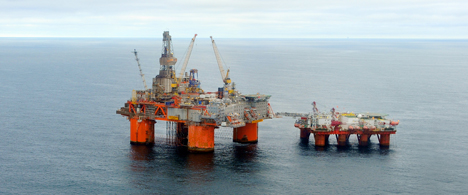 The Snorre partnership has decided to adjust the schedule for the ongoing Snorre 2040 project by postponing the planned date for DG2 from March 2015 to October 2015.
The Snorre partnership has decided to adjust the schedule for the ongoing Snorre 2040 project by postponing the planned date for DG2 from March 2015 to October 2015. NYC-based
NYC-based 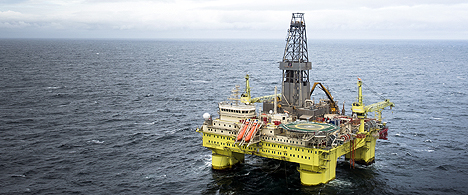 COSL Pioneer. (Photo: Ole Jørgen Bratland/Statoil)
COSL Pioneer. (Photo: Ole Jørgen Bratland/Statoil)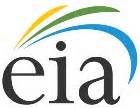 U.S. proved reserves of oil increase for the fifth year in a row in 2013; U.S. natural gas proved reserves increase 10% and are now at an all-time high
U.S. proved reserves of oil increase for the fifth year in a row in 2013; U.S. natural gas proved reserves increase 10% and are now at an all-time high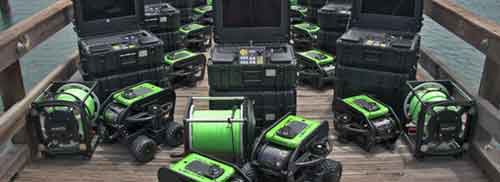 SeaBotix is a world leading manufacturer of innovative and diverse underwater observation class MiniROVs designed to perform a multitude of tasks that include maritime security, search and recovery, hull, pipeline and infrastructure inspection, hazardous environment intervention, aquaculture, sensor deployment, oceanographic research, nuclear applications and more. SeaBotix continues to deliver revolutionary advancements to its diverse portfolio of MiniROV systems that are responsive to demanding professional applications.
SeaBotix is a world leading manufacturer of innovative and diverse underwater observation class MiniROVs designed to perform a multitude of tasks that include maritime security, search and recovery, hull, pipeline and infrastructure inspection, hazardous environment intervention, aquaculture, sensor deployment, oceanographic research, nuclear applications and more. SeaBotix continues to deliver revolutionary advancements to its diverse portfolio of MiniROV systems that are responsive to demanding professional applications. As from January 1st 2015, the Exploration and Production Branch of
As from January 1st 2015, the Exploration and Production Branch of 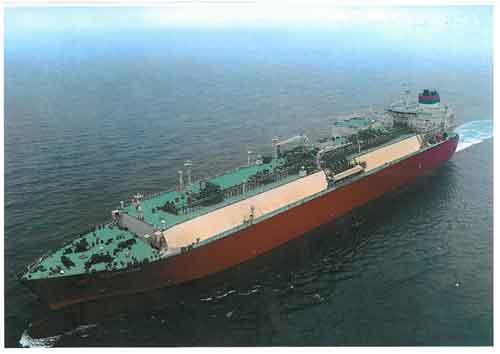 he 162,000 cubic meters capacity vessel was built by Hyundai Heavy Industries (HHI) in Ulsan South Korea. It will operate worldwide with 25 crew including four Omani cadets.
he 162,000 cubic meters capacity vessel was built by Hyundai Heavy Industries (HHI) in Ulsan South Korea. It will operate worldwide with 25 crew including four Omani cadets. Hoover Container Solutions
Hoover Container Solutions  BMT Asia Pacific
BMT Asia Pacific Two new studies released by the
Two new studies released by the  'We have worked with our customers in Aberdeen for many decades,' said Richard Longdon, CEO, AVEVA (photo). 'This office represents our continued commitment to these strategic companies and the wider region. Aberdeen is, and will remain, a key location for the oil & gas industry with the expertise in Aberdeen exported throughout the world.'
'We have worked with our customers in Aberdeen for many decades,' said Richard Longdon, CEO, AVEVA (photo). 'This office represents our continued commitment to these strategic companies and the wider region. Aberdeen is, and will remain, a key location for the oil & gas industry with the expertise in Aberdeen exported throughout the world.'